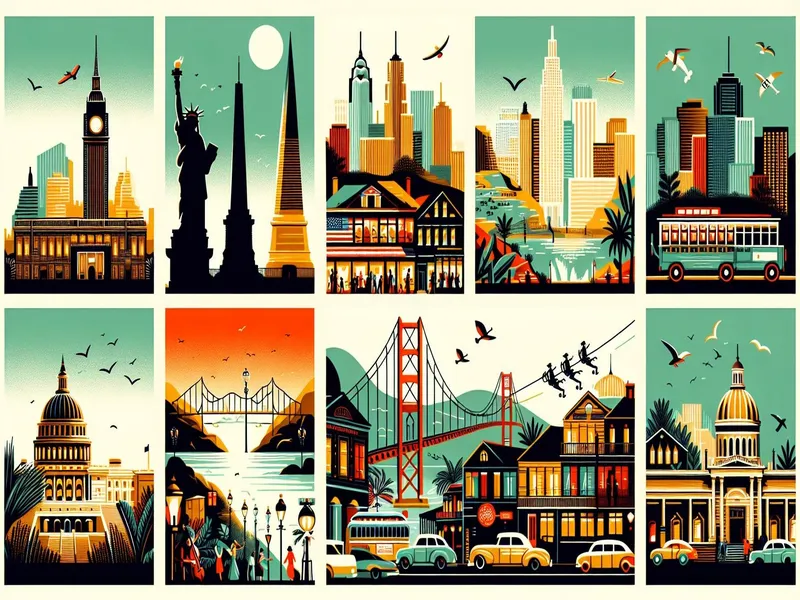
Whether you’re fascinated by ancient ruins, medieval castles, or Renaissance art, history travel in Europe offers an unparalleled journey through time. You’re probably here because you want to make the most of your historical adventure and uncover hidden gems that aren’t on every tourist’s radar.
Ignoring the vast historical treasures scattered across Europe means missing out on experiences that could deeply enrich your understanding of our world’s past. You don’t want to return home feeling like you’ve only scratched the surface or wasted precious travel days on overcrowded attractions.
I’ve spent years traversing Europe’s historic sites, from the cobblestone streets of Rome to the battlefields of Normandy. My expertise can help guide you to the best spots while avoiding common pitfalls tourists often face.
Whether you’re a solo traveler, a family with kids, or a history buff planning your next trip, this guide will cater to your unique needs and preferences. Let’s jump into how you can turn your European vacation into an unforgettable historical journey.
By acknowledging these challenges and offering practical advice, I aim to be your trusted advisor for all things related to history travel in Europe. For more tips on making your travels memorable check out my article here.
The Allure of Historical Travel in Europe
There’s something magical about stepping into a place where history breathes through every stone and street. Europe’s historical travel isn’t just about ticking off famous landmarks but immersing yourself in stories that shaped civilizations.
Unveiling Hidden Gems
Sure, the Eiffel Tower and Colosseum are iconic. But have you ever wandered through the ancient streets of Plovdiv, Bulgaria? It’s one of Europe’s oldest cities, rich with Roman ruins and charming cobblestone alleys. Visiting these lesser-known gems often provides a more authentic experience without the overwhelming crowds.
Walking Through Time
Imagine strolling through Edinburgh’s Old Town, where medieval buildings loom overhead and tales of knights and queens echo from centuries past. Or exploring the Alhambra in Spain, a stunning palace reflecting Moorish architecture’s brilliance. These places aren’t just tourist spots; they’re time machines transporting you to another era.
Personal Anecdotes
I remember my first visit to Pompeii. Standing amid ruins frozen in time by volcanic ash was surreal—like walking into an ancient snapshot. You could almost hear the bustling markets and see children playing in courtyards. Moments like these make historical travel profoundly personal and impactful.
Practical Tips for Exploring History
- Wear Comfortable Shoes: Ancient sites often mean uneven terrain.
- Hire Local Guides: They share stories not found in guidebooks.
- Visit Off-Peak: Early mornings or late afternoons offer fewer crowds.
- Pack Light: Many historic areas have narrow paths or lots of stairs.
Connecting Past with Present
It’s fascinating how some European cities seamlessly blend old with new. Take Prague, for example—its Gothic churches stand proudly alongside modern cafes and shops. This juxtaposition highlights how history continues to influence contemporary culture.
Historical travel in Europe offers an enriching journey through time—a passport to understanding our shared heritage while creating unforgettable memories along the way.
Top Historical Destinations

Let’s jump into some of the most captivating historical destinations in Europe. These places are like stepping into a time machine, where every corner has a story to tell.
Rome, Italy
Rome is an open-air museum. The Colosseum, for instance, isn’t just an iconic structure—it’s a window into ancient gladiatorial games and Roman engineering marvels. Wandering through the Roman Forum feels like walking alongside Julius Caesar himself. Don’t skip the Pantheon; its domed ceiling has inspired architects for centuries. Tip: Visit early morning or late afternoon to avoid crowds and capture the best photos.
Athens, Greece
Athens is where democracy was born and philosophy flourished. The Acropolis stands majestically above the city, with the Parthenon as its crown jewel. Imagine debating with Socrates as you stroll through Agora’s ruins! For a more immersive experience, check out the National Archaeological Museum which houses treasures from ancient Greece. And hey, don’t forget to enjoy some souvlaki while you’re there—history tastes better with good food!
Paris, France
Paris isn’t just about romance; it’s steeped in history too. The Notre-Dame Cathedral tells tales from Gothic architecture to Victor Hugo’s “The Hunchback of Notre-Dame.” Walk along the Seine Riverbanks, lined with historic landmarks like Sainte-Chapelle and Conciergerie. If you’ve got time, visit Musée de Cluny for medieval artifacts that’ll blow your mind. Oh, and climb up Montmartre Hill—you’ll get stunning views plus a peek at bohemian Paris of yore.
Berlin, Germany
Berlin is a city reborn from history’s ashes. Checkpoint Charlie offers a glimpse into Cold War tensions while remnants of the Berlin Wall remind us of division and reunification struggles. Brandenburg Gate isn’t just another monument; it’s symbolized peace since 1791! For deeper insights into WWII history head over to Deutsches Historisches Museum—it’s worth every minute spent there.
Hidden Gems in European History Travel

Europe brims with historical marvels, but some lesser-known spots deserve just as much attention. These hidden gems offer unique experiences that rival the more famous sites, often with fewer crowds and richer local culture.
Český Krumlov, Czech Republic
Nestled in South Bohemia, Český Krumlov feels like a fairy tale come to life. This charming town is dominated by its castle, which boasts stunning Renaissance and Baroque architecture. Wandering through the cobblestone streets feels like stepping back in time. I remember exploring the castle’s labyrinthine corridors and stumbling upon an ancient theater—still operational today! The Vltava River winds through the town, perfect for a leisurely canoe ride or riverside picnic. Pro tip: Visit during autumn when the foliage adds an extra layer of magic to this already enchanting locale.
Bruges, Belgium
Bruges might be small, but it packs a punch when it comes to history and charm. Known as the “Venice of the North” due to its intricate network of canals, Bruges is best explored on foot or by boat. The medieval architecture is remarkably well-preserved; you can almost hear knights’ footsteps echoing down the narrow alleys. One of my favorite memories was climbing Belfry Tower for panoramic views over Market Square and its bustling weekly market filled with local delicacies like Belgian waffles and chocolates. For art lovers, Groeningemuseum houses works from Flemish Primitives—a must-see!
These hidden gems are just waiting to be discovered on your next European adventure.
Planning Your Historical European Journey
Embarking on a historical adventure across Europe? Awesome! It’s like stepping into a time machine, except with better food and comfy shoes. Here’s how to make the most of it.
Best Times to Visit
Timing is everything. Summer might seem ideal, but Europe’s historical sites can get crowded. Trust me; I’ve squeezed through enough tourist-packed streets in Rome to know this firsthand. Spring (April-June) and fall (September-October) are perfect for milder weather and fewer crowds. Imagine strolling through Athens’ ancient ruins without bumping into selfie sticks every five seconds. Plus, attractions often have shorter lines during these shoulder seasons.
| Season | Pros | Cons |
|---|---|---|
| Summer | Warm weather, long days | Crowds, higher prices |
| Spring/Fall | Mild weather, fewer tourists | Unpredictable weather |
| Winter | Fewer tourists, lower prices | Cold weather, limited access |
Travel Tips and Safety
Staying safe is key while having fun. First off, keep an eye on your belongings—especially in busy areas like Paris’ metro or Rome’s Colosseum. Invest in a good money belt; it’s worth it. When I visited Berlin alone, I found that blending in with locals made me feel safer and more connected—ditch the fanny pack for a crossbody bag!
Quick tips:
- Pack light but smart: Comfortable shoes are non-negotiable.
- Use local guides: They offer insider info you won’t find in guidebooks.
- Stay alert: Be aware of your surroundings without being paranoid.
Humor helps too—ever tried asking for directions in Hungarian? It’s a hoot!
Budgeting Your Trip
Europe doesn’t need to expensive if you’re savvy about it. Set a daily budget covering accommodation, meals, attraction fees, and extras like souvenirs or unexpected treats (like that divine gelato in Florence). In my experience:
- Accommodation: Hostels or Airbnb options can save you money.
- Meals: Local markets often sell fresh produce cheaper than restaurants.
- Transport: Eurail passes can be cost-effective if planning extensive train travel.
I once saved loads by purchasing museum passes—they give unlimited access to multiple sites at reduced rates. Here’s a simple breakdown:
| Expense Category | Estimated Cost Per Day |
|---|---|
| Accommodation | $30-$100 |
| Meals | $20-$50 |
| Transport | $10-$30 |
| Attractions | $15-$40 |
Traveling smartly means more cash left over for those unique experiences that truly enrich your journey!
Ready to pack your bags yet?
Immersive Historical Experiences
Traveling through Europe offers countless immersive historical experiences. Let’s jump into some that will make your journey unforgettable.
Guided Tours vs. Self-Guided Tours
When it comes to exploring history, choosing between guided tours and self-guided tours can be tricky. Guided tours often provide in-depth knowledge from experts who bring stories to life with fascinating details and anecdotes. For instance, I once took a guided tour of the Colosseum in Rome—our guide’s vivid descriptions made me feel like I was stepping back in time.
Self-guided tours offer freedom and flexibility, letting you explore at your own pace. You can linger longer at places that intrigue you or skip areas that don’t catch your interest. Apps and audio guides can enhance these experiences by providing insightful information without the constraints of a group schedule.
Living History Museums
Living history museums are fantastic for experiencing the past firsthand. These interactive museums use costumed actors to recreate historical settings and daily life from different eras. One memorable visit I had was to Skansen in Stockholm, where actors performed traditional crafts like blacksmithing and weaving right before my eyes.
These museums aren’t just static displays; they invite you to engage actively with history. Imagine walking through a medieval village or witnessing a Revolutionary War encampment—it’s like being part of a live-action documentary!
Historical Reenactments
Historical reenactments take immersion up a notch by recreating specific events with meticulous detail. These events draw enthusiasts dressed in period attire who reenact battles, ceremonies, or everyday life scenes from history.
I attended the annual Battle of Hastings reenactment in England—a full-scale recreation of the 1066 battle complete with knights on horseback and archers firing volleys of arrows. It felt surreal watching history unfold right before my eyes.
Participating as an observer allows you to witness pivotal moments in history brought vividly back to life, offering insights into how people lived, fought, and celebrated centuries ago.
Europe’s rich world of historical experiences offers something unique for every traveler interested in delving deeper into our shared past—from guided explorations to dynamic living museums and thrilling reenactments.
The Bottom Line
Exploring Europe’s historical sites offers more than just a trip—it’s a journey into the past that enriches the soul. By venturing beyond popular landmarks and uncovering hidden gems, you can experience history in a truly immersive way.
Whether wandering through ancient ruins or strolling along medieval streets you’ll find that each destination tells its own unique story. Practical tips like visiting during off-peak hours and hiring local guides can enhance your travel experience significantly.
Historical travel isn’t merely about seeing old buildings; it’s about connecting with the tales that shaped our world. So pack your bags lace up those comfortable shoes and set out on an adventure that promises to be as educational as it is unforgettable.